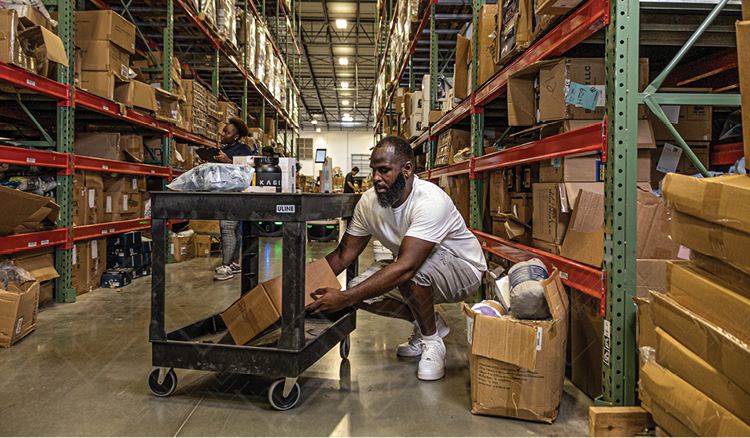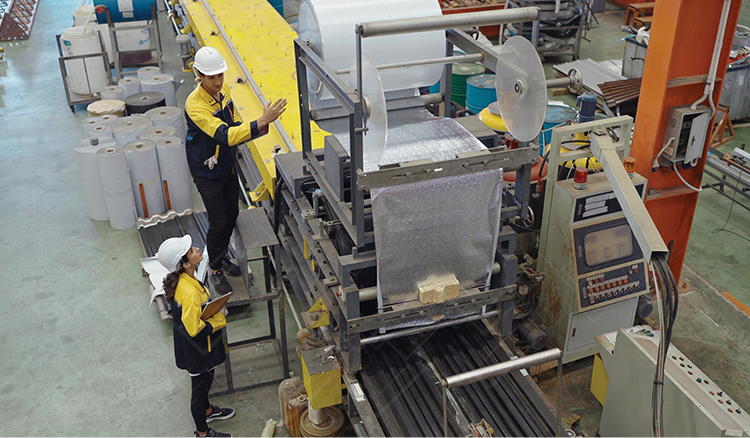How Does On-Demand Labor Impact Full-Time Employees?
If your company regularly gives out overtime and your workers have come to expect it, you might be hesitant to adopt any solution that would wipe this away for fear that your employees would get upset about their lost income and quit. Likewise, if you’re already having employee satisfaction problems, you might hesitate to test the waters with any labor solution that might cause concern about job security.
We hear these concerns all the time when talking to businesses about on-demand labor. At Veryable we’ve navigated this issue with many businesses before to create a new labor solution that actually has the opposite effect that most people expect.
Having on-demand labor working alongside your current workforce doesn’t always engender jealousy or fear among full-time employees. In fact, it can do quite the opposite.
In this article, you’ll learn the effects that on-demand labor has on full-time employees when deployed correctly. You’ll see real results from other companies and how you can address the fears of your employees if you’ve decided to implement on-demand labor.
Ways on-demand labor impacts full-time employees
On-demand labor reduces overtime for full-time employees
On-demand labor reduces the amount of overtime required of full-time employees (FTEs). Properly deployed on-demand labor solutions will give businesses flexible capacity to complete projects and take on more work without asking their employees to work past their regular work hours.
Because on-demand labor can get workers in the door quickly, a business using on-demand labor can drastically reduce overtime. For example, one Veryable customer in healthcare supplies reduced overtime in their warehouse by 95% over a 90-day period using on-demand labor to handle extra work.
For workers who are accustomed to working overtime and the income that comes with it, it will definitely be a change of pace. Some will likely be upset by this, and others will be fine with the change.
However, less overtime comes with many positives for workers. When they aren’t constantly working overtime, FTEs can know when they’re going home, instead of always wondering if they’ll have to stay late. They can plan for events after work, spend time doing things they enjoy, and recharge before coming back for their next shift.
On-demand labor helps full-time employees accomplish more
Your full-time employees are probably tasked with work that doesn’t directly generate value.
That means your full-time employees who are skilled at something, such as welding, can spend more time on the welding and less time cleaning up or moving materials around. Since they have a helper, your FTEs will be able to accomplish more by spending all their time doing what they’re uniquely qualified to do instead of doing tangential tasks they probably enjoy much less.
Basically, on-demand labor provides assistance to your shop floor to handle those duties that keep FTEs from spending their time on high-leverage tasks.
On-demand labor reduces turnover among full-time employees
Because on-demand labor reduces the strain of overtime on FTEs and allows them to focus on the work they’re best at, it’s no surprise that on-demand labor reduces turnover. Bringing on-demand labor to work alongside FTEs can create positive change if it is handled properly.
At the health company mentioned previously, employee responses to a company survey showed engagement improved by 20 points out of 100 after the launch of Veryable’s on-demand labor at their facility. Not only that, the efficiency of their order lines increased by 30%.
When employees are not overworked and they spend their time doing work they enjoy, they are more engaged. In this case (and many others like it) the company’s use of on-demand labor improved employee satisfaction, which in turn improved productivity.
Addressing on-demand labor concerns among your employees

We’ve talked about how on-demand labor affects your workers when done properly, but we have not yet addressed the workers’ concerns directly. Full-time employees most often worry about job security, different expectations for them vs the on-demand workers, and having to help train new workers.
You can address each of these concerns, so we will lay out each one in turn here.
Addressing concerns about job security caused by on-demand labor
Many workers will worry about their own jobs when they see that on-demand workers are performing more and more work as you build a labor pool.
The simple explanation is that on-demand workers are there to help pick up the slack so that full-time employees don’t have to work overtime. Point out that they are being freed up from doing that work and can now focus on what they are uniquely good at, which is likely the reason they still have a job with you. You can reiterate the value they provide to the company and that you value their decision to work full-time, because you know you can depend on them to be consistent.
Addressing concerns about differing expectations for full-time employees and on-demand workers
Some full-time employees might not believe it’s fair that on-demand workers have more flexibility in choosing when they work.
If your company has flex shifts just for on-demand workers, full-time employees might become jealous of this option. Also, if you are using piecework pay for on-demand workers but not for your FTEs, then they might be jealous when they see on-demand workers leaving work a couple hours early after meeting their quota.
If you can’t provide the same flexibility to your full-time employees, you could reiterate to your FTEs that these options are only available to on-demand workers because they are not working full-time hours. Explain the tradeoffs that would be necessary for your FTEs to take advantage of those flexible hours, namely less work hours, which would affect the amount of money they could make.
If they are jealous of the piecework opportunity, you could find a way to offer piecework incentives to your FTEs. Or, you could offer them the option of using an on-demand labor platform as workers if they would like to take advantage of those opportunities.
Addressing objections to training new workers
There might be some of your full-time employees who object to training new workers from an on-demand labor platform. They could see it as taking away from their productivity, in which case this is a valid concern that you should be proud they’re seeing.
However, this is short-sighted thinking because if they can help train the worker, then they’ll have more help around to get the work done faster. This might mean they can hit their own productivity targets faster and earn incentives, or it might mean their day is just that much easier. Training might be a temporary inconvenience, but in the long-term with a labor pool of trained workers, your FTEs will have to work less overtime and can focus on doing the more enjoyable work they are skilled at.
This approach can also benefit your business by minimizing machine downtime and giving you the opportunity to groom Operators in your labor pool from helpers into skilled workers in the roles you need extra help in.
You can also present the training of new workers as an opportunity for personal growth among FTEs. Coaching is a valuable soft skill that they can take with them to any future job, or even in their personal lives. Many wise people have said that teaching a subject is one of the best ways to better understand it.
A real example of on-demand labor working alongside full-time employees
We know this many positive effects of on-demand labor on full-time employees might sound far-fetched and promotional, but we have another real example to back it up.
ShineOn, a print-on-demand custom jewelry manufacturer serving e-commerce sellers, witnesses drastic seasonal fluctuations in customer demand, particularly during peak occasions like Christmas, Valentine's Day, and Mother's Day. Balancing these demand surges with a traditional, fixed workforce presented a complex puzzle.By seamlessly integrating Veryable's on-demand labor model, ShineOn was able to ramp up and down its production in tandem with customer orders to fulfill orders within an impressive 1-3 days of placement. However, the benefits extended far beyond prompt delivery. Veryable's solution enabled ShineOn to reduce annual overtime costs by nearly $300,000.
Previous Posts
How Policy Constraints, Not Just Production Bottlenecks, Threaten Your Bottom Line
The Future of Manufacturing and Logistics
Create a free business profile today to explore our platform.






